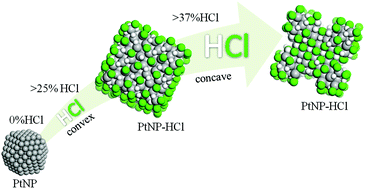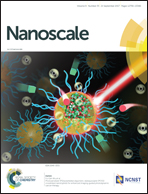Shape control in concave metal nanoparticles by etching†
Abstract
The shape control of nanoparticles constitutes one of the main challenges in today's nanotechnology. The synthetic procedures are based on trial-and-error methods and are difficult to rationalize as many ingredients are typically used. For instance, concave nanoparticles exhibiting high-index facets can be obtained from Pt with different HCl treatments. These structures present exceptional capacities when are employed as catalysts in electrochemical processes, as they maximize the activity per mass unit of the expensive material. Here we show how atomistic simulations based on density functional theory that take into account the environment can predict the morphology for the nanostructures and how it is even possible to address the appearance of concave structures. To describe the control by etching, we have reformulated the Wulff construction through the use of a geometric model that leads to concave polyhedra, which have a larger surface-to-volume ratio compared to that for nanocubes. Such an increase makes these sorts of nanoparticles excellent candidates to improve electrocatalytic performance.



 Please wait while we load your content...
Please wait while we load your content...